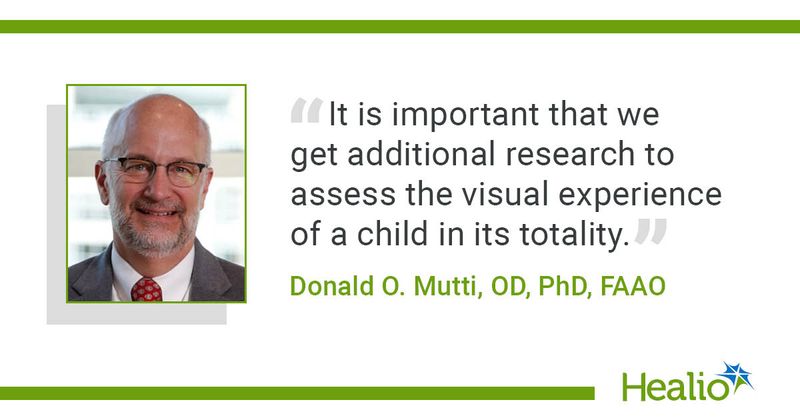Consistent research necessary to understand myopia as a disease
According to a new report from the National Academies of Sciences, Engineering and Medicine, more consistent international data are necessary to fully understand myopia and its underlying mechanisms.
“I wish I could tell you the prevalence of myopia in the United States or some estimate of it, but I can’t,” Daphne Maurer, PhD, FRSC, Distinguished University Professor in the department of psychology, neuroscience and behavior at McMaster University and report co-author, said in a webinar presentation of the report. “I can’t because the last national data — that is data collected in the same way and representative of populations all over the United States — was published from 2004, 20 years ago.”

While there are some data on various patient populations at the regional level, those data were collected using different methods and definitions of what it means to be myopic, Maurer said.
According to National Health and Nutrition Examination Survey data included in the report, between the early 1970s and early 2000s myopia prevalence nearly doubled, jumping from 25% to 41.6%, while prevalence of high myopia increased eightfold.
Maurer highlighted that in some parts of the world myopia prevalence is greater than 90%, citing a study of 19-year-old men in Seoul, Korea, with a prevalence of 97%.
Anthony N. Kuo, MD, associate professor of ophthalmology at Duke University, discussed the importance of dilation when assessing for myopia, especially in children, because that is the greatest period of eye growth. Measuring axial length and other structural measures is also important in diagnosing myopia.
“Gene expression can be modified by the environment,” Donald O. Mutti, OD, PhD, FAAO, E.F. Wildermuth Foundation Professor in Optometry at The Ohio State University, said in the webinar. According to Mutti, while genetics may play a factor, 1 to 2 hours per day outdoors can delay or prevent the onset of myopia. However, these protective benefits only seem to produce results in children who have yet to develop myopia — not children who are already myopic.
Mutti also noted there is no evidence to suggest that near work is a significant factor for myopia onset.
“Either near work isn’t a thing or we’re not assessing near work adequately to understand what specifically is a feature of the near work environment that is important in how the eye develops,” Mutti said. “It is important that we get additional research to assess the visual experience of a child in its totality.”
Jody Ann Summers, PhD, professor and vice chair of research in the department of cell biology at the University of Oklahoma Health Sciences Center, discussed the pathogenesis of myopia, pointing to research spanning the past 40 years that supports a chemical response in the retina relaying additional responses that affect the sclera and ocular length. While key signaling events that trigger this response have been identified, the retinal mechanisms involved are poorly understood.
Finally, when discussing the socioeconomic aspect of understanding myopia, Afua O. Asare, OD, PhD, assistant professor at the University of Utah, said, “Socioeconomic barriers to identifying and treating myopia exist across the vision care pathway, which includes vision screenings, referrals and treatment at the patient, provider and system levels.”
These barriers included lack of awareness, shortage of eye care providers, lack of national surveillance and funding shortfalls.
The report highlighted several recommendations, including a need for consistent national data, international consensus guidelines on how to define and measure myopia, child-friendly diagnosis technology, national myopia surveillance and long-term trials beginning at earlier ages.
“Myopia is a disease with increasing worldwide prevalence and severity,” K. Davina Frick, PhD, a health economist and professor at Johns Hopkins Carey Business School and co-chair of the committee, said in a National Academies press release. “Recognition of the impact of its downstream complications on people’s lives beyond nearsightedness needs to be taken seriously.”
References:
- Myopia: Causes, prevention and treatment of an incredibly common disease. https://nap.nationalacademies.org/catalog/27734/myopia-causes-prevention-and-treatment-of-an-increasingly-common-disease?utm_medium=email. Published Sept. 17, 2024. Accessed Sept. 17, 2024.
- New report recommends myopia be classified as a disease, policies for children to spend time outdoors. https://www.nationalacademies.org/news/2024/09/new-report-recommends-myopia-be-classified-as-a-disease-policies-for-children-to-spend-time-outdoors. Published Sept. 17, 2024. Accessed Sept. 17, 2024.
